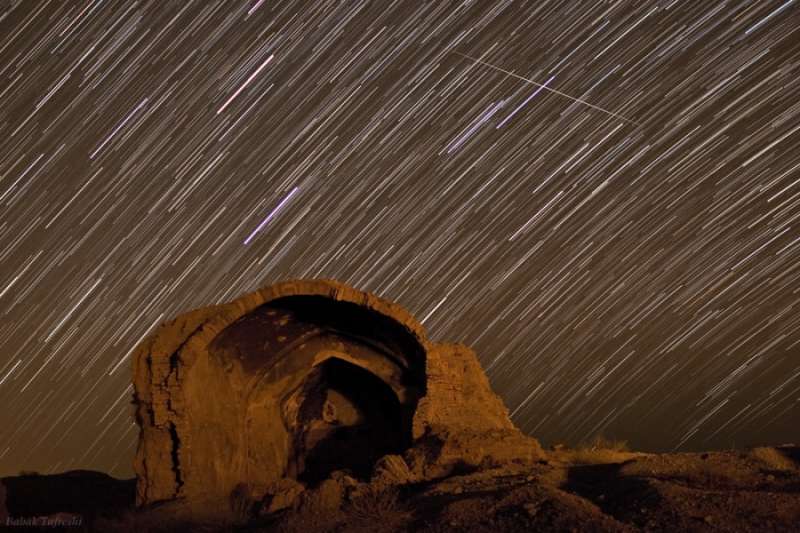Credit & Copyright: Babak Tafreshi
(TWAN)
Explanation:
The Quadrantid Meteor Shower
is an annual event for planet Earth's
northern hemisphere skygazers.
It usually peaks briefly in the cold, early morning hours of January 4.
The shower is named for its
radiant point on the sky within the
old, astronomically obsolete constellation
Quadrans
Muralis.
That position is situated near the boundaries of the modern
constellations Hercules, Bootes, and Draco.
In this haunting time exposure,
two quadrantid meteor streaks are captured
crossing trails
left by rising stars
of the constellations Virgo and Corvus, but Saturn
leaves the brightest "star" trail.
The meteor streaks, one bright and one faint, are nearly parallel
above and right of center in the frame.
Fittingly, the old cistern structure in the foreground lies
above the now
buried city of Qumis.
Known as a city of many gates, Qumis (in Greek history
Hecatompylos),
was founded 2300 years ago in ancient Persia.
1999 2000 2001 2002 2003 2004 2005 2006 2007 2008 2009 2010 2011 2012 2013 2014 2015 2016 2017 2018 2019 2020 2021 2022 2023 2024 2025 |
Yanvar' Fevral' Mart Aprel' Mai Iyun' Iyul' Avgust Sentyabr' Oktyabr' Noyabr' Dekabr' |
NASA Web Site Statements, Warnings, and Disclaimers
NASA Official: Jay Norris. Specific rights apply.
A service of: LHEA at NASA / GSFC
& Michigan Tech. U.
|
Publikacii s klyuchevymi slovami:
meteor - meteor shower - star trail - Meteor - Meteornyi potok - sledy zvezd
Publikacii so slovami: meteor - meteor shower - star trail - Meteor - Meteornyi potok - sledy zvezd | |
Sm. takzhe:
Vse publikacii na tu zhe temu >> | |
